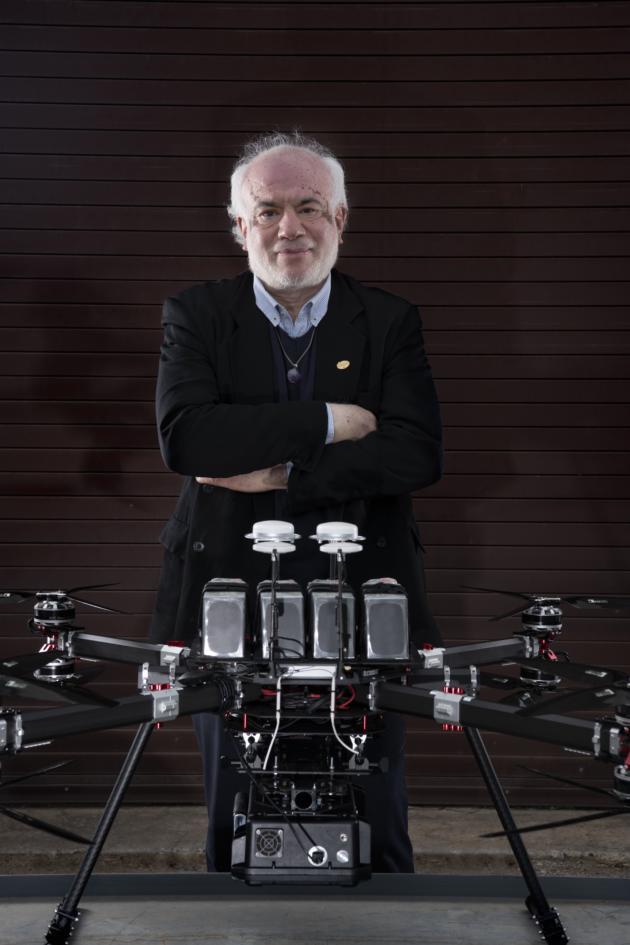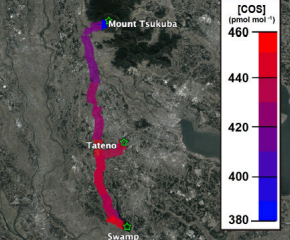From Albuquerque Journal by Mavendra Dubey on March 24th 2019.

SANTA FE, N.M. — The fuel heating your house or cooking your food right now is most likely natural gas. If so, it probably traveled through hundreds or even thousands of miles of pipeline to get there from the well pads where it originated.
Just like any pipe, the pressurized networks that convey natural gas can leak. But what if those “fugitive” leaks are in the middle of nowhere? How can we quickly and affordably get to and identify the location of a gas leak – fast enough to prevent explosions, avoid financial loss and protect our environment?
The answer may be a novel, smart gas-leak detection system that runs year-round – without human operators – to locate small leaks. It is even compact enough to fit on a drone.
A major global energy source, natural gas accounts for almost one third of the country’s primary energy consumption in the United States. The revolution in hydraulic fracturing has produced abundant natural gas – in fact, the increased ability to produce natural gas has made the U.S. one of the top producers in the world.
While natural gas burns cleaner and emits much less carbon dioxide (CO2) per unit of energy produced than other fossil fuels when burned, it is a powerful greenhouse gas before combustion – 25 times more potent than CO2 – if it escapes into the atmosphere. Therefore, eliminating any leakage to the atmosphere is key to harness its benefits.
Producing, processing and distributing natural gas depends on a vast network of pipelines and compressors that run across the country. Texas, New Mexico and surrounding states produce a majority of the country’s natural gas, but it flows through that infrastructure to every corner of the U.S.
Because the natural gas network is so extensive, there are potential failure points where gas leaks can, and do, occur. These leaks add to air pollution and pose dangerous explosive hazards, so being able to quickly locate and repair them is critical.
Traditional leak detection systems rely on people periodically going out and surveying the network, an expensive and risky task. These traditional systems use low-sensitivity infrared cameras that detect larger leaks, but they cannot provide quantitative data regarding the size of the leak and they are labor-intensive.
To solve these problems, a team from Los Alamos National Laboratory, Aeris Technology and Rice University has developed the Autonomous, Low- cost, Fast Leak Detection System (ALFaLDS) to detect, locate and quantify leaks quickly, safely and inexpensively.
Three subsystems make up the overall system: a small methane and ethane sensor, an anemometer that measures wind, and a trained neural network (which some would call artificial intelligence) that ingests and analyzes all the data to find leaks rapidly – almost in real time.
The methane and ethane sensor, designed and marketed by Aeris Technologies, combines a device to measure infrared light absorption, which helps detect the presence of both methane and ethane in natural gas, with a built-in GPS and data telemetry system. The sensor differentiates a pipeline gas leak from other sources of methane, such as landfill gas and or cattle operations.
To measure atmosphere and wind speed measurements, ALFaLDS uses the world’s smallest and lightest commercial 3-D ultrasonic anemometer. It has no moving parts, eliminating maintenance issues, and because it is so light, it is also perfect for mounting on a drone.
The neural network, developed by Los Alamos National Laboratory, collects, integrates and processes the data on methane, ethane, wind speed and wind direction to locate and quantify leaks rapidly. The neural network code can also accurately distinguish between an abrupt leak and a steady leak from periodic venting that occurs during normal operating conditions around a gas well. Field tests showed that the system minimizes false positives and maximizes the efficiency of repair efforts with pinpoint accuracy.
ALFaLDS has already been deployed on towers at gas well pads in Colorado, and on cars driven through well-pad operations and in urban areas. It is now being considered for deployment on drones for observations over harsh and inaccessible environments like remote oil and gas fields, landfills, and pipeline networks where gas is processed and distributed.
As natural gas networks expand to meet demands, it is more important than ever to be able to quickly detect and fix gas leaks. ALFaLDS provides robust, fast and affordable gas leak detection that will help harness the benefits of this natural resource in a safe, reliable and inexpensive way.
Manvendra Dubey of the Los Alamos National Laboratory’s Earth and Environmental Sciences division is a LANL Fellow and a Fellow of the American Association for the Advancement of Science.


